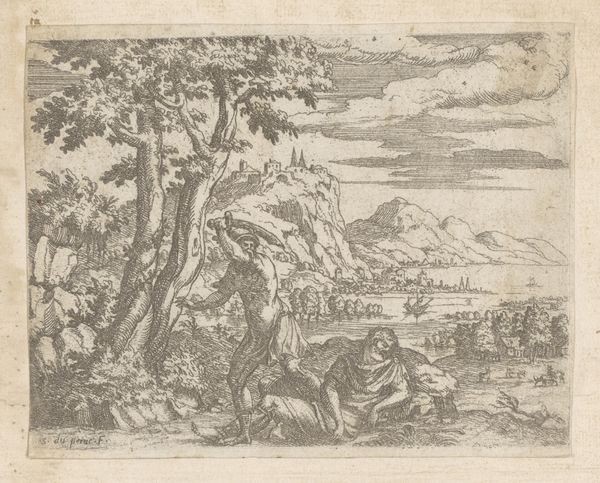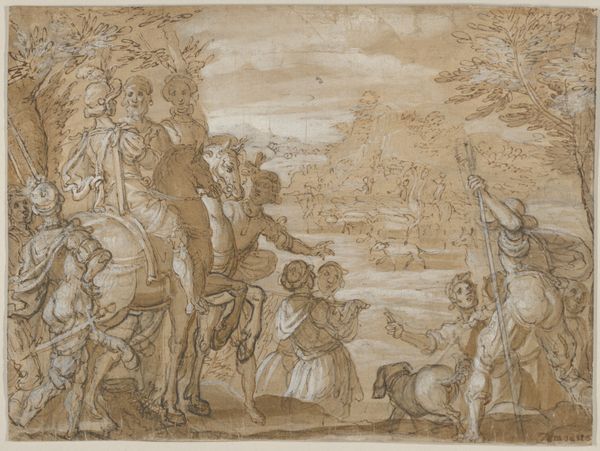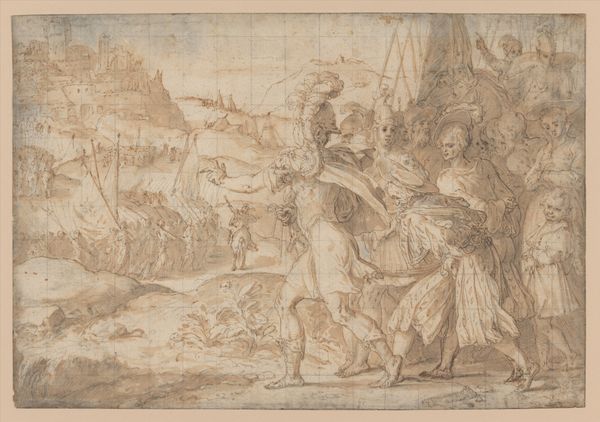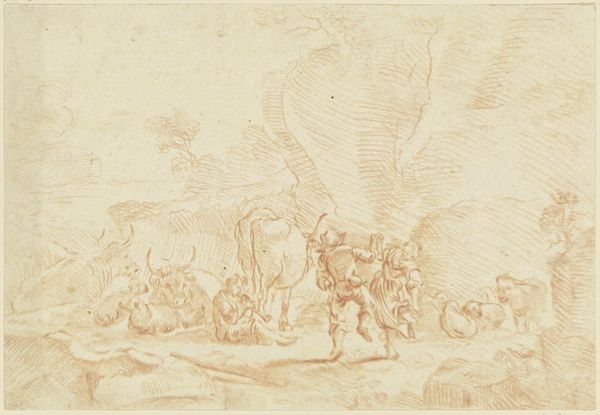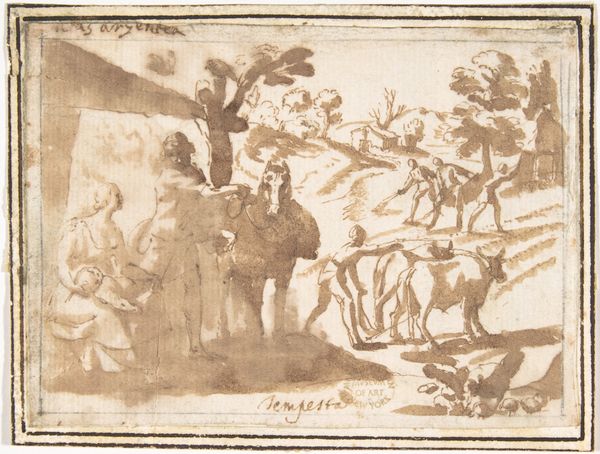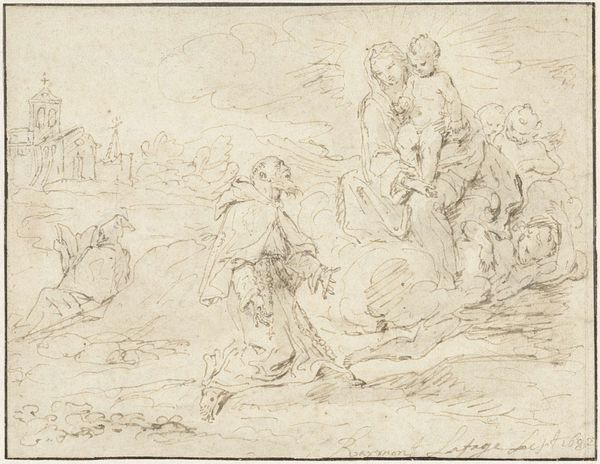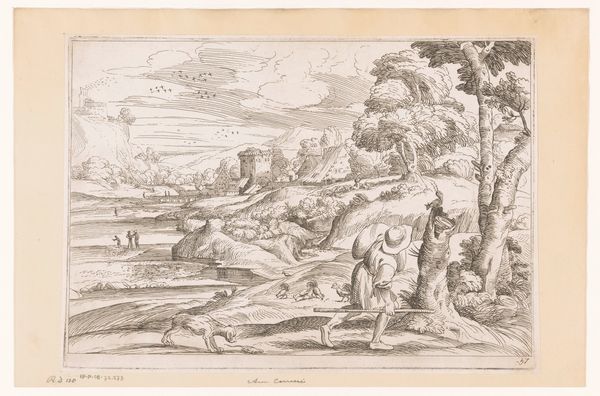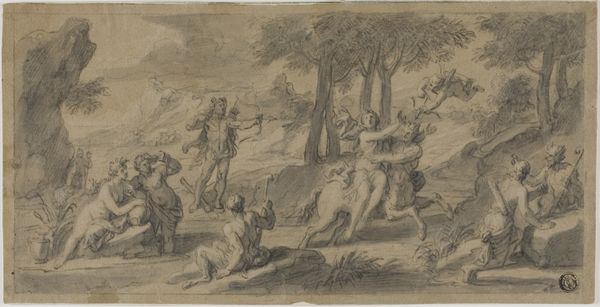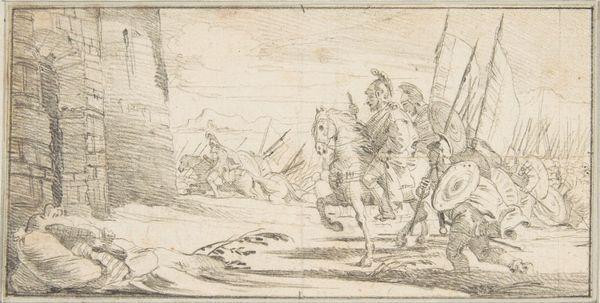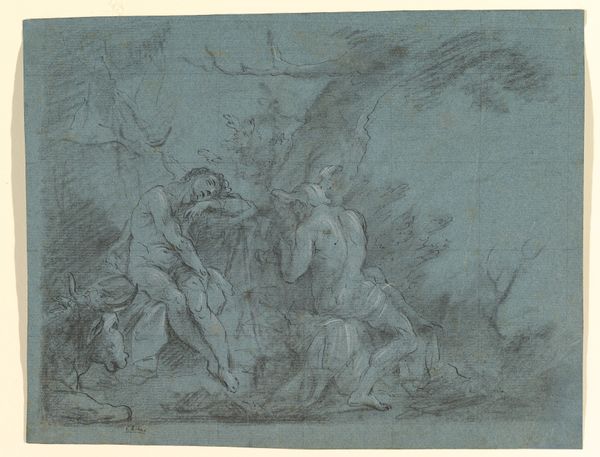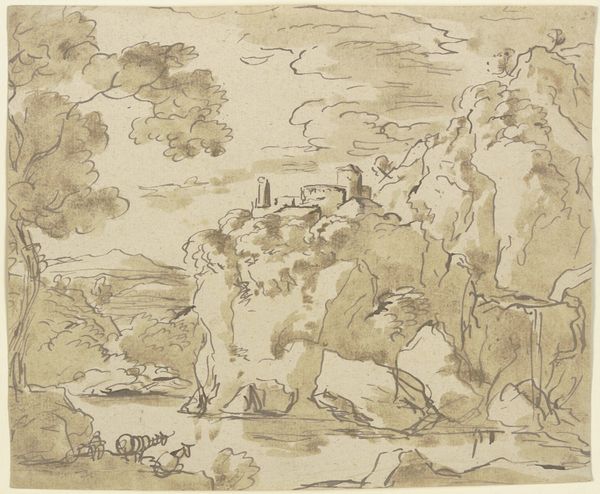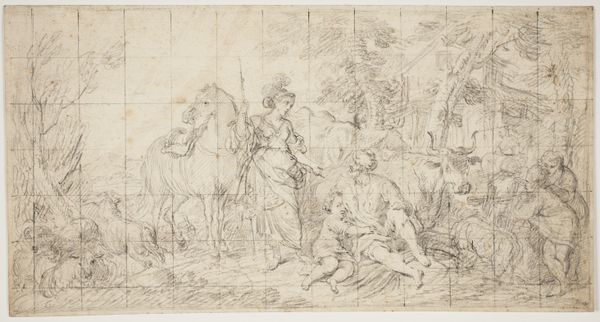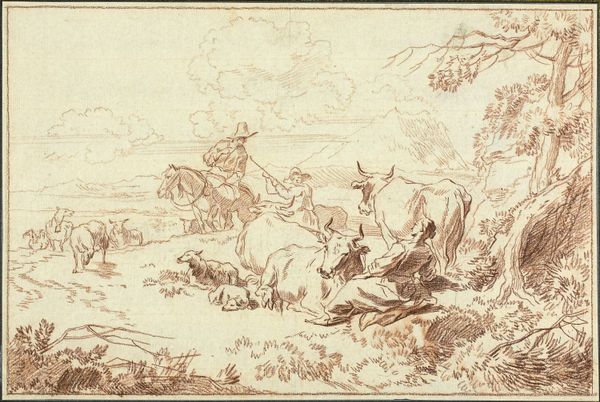
Bacchantin, an einer Panherme rückwärts auf einer Ziege sitzend, und ein Satyr, der mit einem Bock kämpft, in eine Landschaft platziert c. 1520 - 1530
0:00
0:00
Copyright: Public Domain
Editor: This drawing, titled "Bacchantin, an einer Panherme rückwärts auf einer Ziege sitzend, und ein Satyr, der mit einem Bock kämpft, in eine Landschaft platziert", was created around 1520-1530 by Michel Corneille the Younger. It's rendered in drawing. It strikes me as a really dynamic composition, full of chaotic energy. What catches your eye when you look at it? Curator: What I find fascinating is the interplay between the seemingly classical subject matter – Bacchantes, satyrs – and the artist’s choice of materials. It's a drawing, a relatively accessible and reproducible medium, rather than, say, a grand history painting in oil. This begs the question: how does the mode of production influence the dissemination and consumption of such imagery? Editor: That's an interesting point. It makes you consider who the audience was likely to be, if it wasn’t the elite patrons usually associated with those subjects. Curator: Exactly. Were these drawings circulated among artists as models, or perhaps sold to a growing middle class with an interest in classical themes? The relative affordability of drawing compared to painting also points to a different economic reality impacting the consumption of art. Notice the red chalk used. Was it readily available, or was there a prestige to the imported color that informed how viewers related to the image? Editor: I hadn't considered the materials themselves carrying social weight. So, instead of focusing solely on the mythological narrative, you're looking at how its creation and potential distribution reflects the social landscape? Curator: Precisely. The very act of depicting this bacchanal scene through the means of drawing speaks volumes about the artist's intention and the intended audience's social and economic standing, and access to materials in that era. It’s not just *what* is depicted, but *how* it’s made that matters. Editor: I guess I've mainly focused on the art object in itself but I'll try and think of it as something produced using labour and resources available in society!
Comments
No comments
Be the first to comment and join the conversation on the ultimate creative platform.
